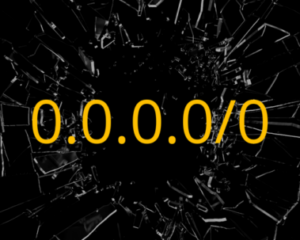Modern cloud teams don’t struggle to detect misconfigurations—they struggle to close them at scale. In elastic, multi‑account environments, a pure “report and ticket” posture creates noise and drift. This guide shows how to move from alerts to outcomes with cspm automated remediation that is safe by design, wired into CI/CD, and measurable in 90 days. You’ll get proven patterns, a pipeline blueprint, starter policy packs, and an executive‑friendly scorecard. This guide is vendor‑neutral; examples show how teams can pair real‑time CSPM signals (e.g., from Cy5’s ion Cloud Security Platform) with policy‑as‑code engines to auto‑fix safely.
Key Takeaways
- What to automate vs. review: automate low‑risk, high‑volume fixes; route identity and data‑impact changes to humans.
- Safe‑by‑design patterns: guardrails, dry‑runs, scoped changes, exception handling, and break‑glass.
- CI/CD gates + rollback: pre‑merge checks, severity thresholds, verification, and automatic revert paths.
- Starter policy packs: IAM hygiene, storage exposure, and egress controls—plus open‑source examples to jump‑start.
- Metrics that matter: MTTR, posture score delta, and % auto‑resolved within SLA—reported on a simple scorecard.
Why Manual Triage Fails in Elastic Infra
In cloud, infrastructure is ephemeral, identities multiply, and services ship daily. Ephemeral resources, identity sprawl, and multi‑cloud drift make queues grow faster than fixes. Replace detect‑and‑report with detect‑and‑enforce—auto‑rolling obvious misconfigs back to baseline under tight guardrails. (Examples: public storage created outside guardrails, wildcard IAM, open egress, unencrypted DBs.). Manual queues can’t keep up with the rate of change:
- Ephemeral resources: Short‑lived instances, containers, and serverless functions appear and vanish between scans.
- Identity sprawl: Human, service, and machine identities gain privileges over time; context gets lost.
- Multi‑cloud drift: Different policy engines and APIs mean “compliant” in one cloud isn’t identical in another.
A “detect‑and‑report” model creates tickets faster than teams can close them. A “detect‑and‑enforce” approach—autorolling obvious misconfigs back to a safe baseline—brings posture back under control without waiting on manual approval for every change.
Authority note: Leading definitions of CSPM emphasize continuous visibility, policy checks, and (guided) remediation workflows across clouds—our blueprint aligns with that model.
Examples where automation pays immediately
- Public storage created outside guardrails.
- Overly permissive IAM roles with wildcard principals or actions.
- Open egress rules (0.0.0.0/0) on critical subnets.
- Unencrypted databases provisioned without required KMS keys.
Side note: make posture an operating cadence with policy and evidence embedded in delivery. Treat compliance as a continuous, engineering‑owned outcome rather than a periodic checklist.
Patterns for Safe Auto‑Fix (Guardrails, Dry‑Runs, Exceptions)
Before you flip anything to “auto,” define how automation behaves in your environment. Safety is a design choice. Use this Safe Auto‑Fix Pattern Checklist (quarantine first, least‑privilege edits, time‑boxed waivers, dry‑run/plan mode, change windows, tag‑based scope, break‑glass). We also recommend two overlays:
- Context‑aware triage via platform graphs to rank blast radius.
- Compliance overlays mapping actions to CIS and NIST CSF 2.0 to justify automation and audits.
Tip: roll out incrementally; prefer quarantine → fix to hard deletes; default‑deny public exposure.
Safe Auto‑Fix Pattern Checklist
| Pattern | What it enforces | When to use | Risk mitigations | Rollback plan |
|---|---|---|---|---|
| Quarantine first | Move risky resources to an isolated segment or apply deny policies | Suspect public exposure or anomalous behavior | Tag quarantined assets; time‑box isolation; notify owners | Automatic un‑quarantine after approval or fix |
| Least‑privilege edits | Narrow broad IAM statements to least‑privilege | Wildcards or over‑broad resource scopes | Keep diffs small; pre‑compute impact; stage changes | Reapply previous policy from version control |
| Time‑boxed waivers | Temporary exceptions with expiry | Legit exceptions (pen‑tests, data shares) | Require owner + justification; alert on expiry | Auto‑revoke at expiry; escalation if blocked |
| Dry‑run / plan mode | Preview changes without enforcing | New controls or high‑blast‑radius changes | Write to logs and PR comments; sample on subsets | Convert plan → enforce on greenlight |
| Change windows | Enforce outside peak hours | Controls that can cause brief disruption | Align with SRE calendars; add freeze overrides | Manual override + audit trail |
| Tag‑based scope | Target only “managed” or “prod” assets | Mixed environments or phased rollouts | Enforce naming/tagging standards | Expand scope gradually via tags |
| Break‑glass | Human approval before action | Sensitive resources or unknown impact | Require two‑person approval; log verbosely | One‑click revert with owner assignment |
Guardrails that Matter
- Scope limits: Start with “managed” accounts/projects and non‑prod.
- Blast‑radius tiers: Classify actions (e.g., “remove public ACL” = low; “tighten IAM” = medium; “revoke key” = high).
- Approval paths: Build in break‑glass for high‑impact changes.
- Context‑aware triage: Use platform context/graphs to rank blast radius (e.g., internet‑exposed + sensitive data path = higher priority).
- Compliance overlays: Map actions to CIS/NIST controls to justify automation in change reviews.
Dry‑run & logging
Run policies in preview first. Write proposed changes to append‑only logs and PR comments so reviewers see exactly what will happen.
Exception handling
Use time‑boxed waivers with owners and labels. Exceptions should be visible in dashboards and expire automatically.
Risk‑reduction tips
Roll out incrementally; prefer “quarantine then fix” to outright deletes; default‑deny public exposure, default‑allow within private scopes. Don’t auto-rotate keys during business hours; schedule off-peak or require break-glass.
CI/CD Integration Blueprint (Pre‑Merge Checks, Pipeline Gates, Rollback)
The path to durable outcomes is to make posture checks part of delivery—just like unit and integration tests.
Where to Place CSPM Automated Remediation in Your Pipeline
- Pre‑merge: detect, annotate, and block critical drift.
- On merge: enforce and remediate with guardrails.
- Post‑deploy: verify, log, and roll back if needed.
Practical pattern
- Use platform APIs (e.g., ion) to annotate PRs with posture diffs, then run Cloud Custodian in dry‑run for preview. On merge, enforce; post‑deploy, verify + rollback if needed.
Pipeline Blueprint (End‑to‑End)
| Stage | Checks/Inputs | Gate criteria | Actions on pass | Actions on fail | Observability/Logs |
|---|---|---|---|---|---|
| PR scan | IaC lint + policy tests; cloud posture delta vs baseline | No “critical” findings | Annotate PR with findings; proceed | Block merge; assign owner; open ticket | PR annotations; build logs |
| Plan preview | Dry‑run of remediation on a sandbox | Zero high‑risk changes | Publish plan; request approvals if needed | Require reviewer sign‑off or waiver | Artifacted plan; audit log |
| Gate | Severity thresholds (e.g., critical=block) | Threshold met | Merge allowed | Merge blocked; notify | Gate metrics |
| Merge | Versioned policies and runbooks | N/A | Tag release; store change journal | N/A | Change journal |
| Remediate | Event‑driven policy execution | All actions within guardrails | Execute actions; write diffs | Quarantine; escalate | Custodian/automation logs |
| Verify | Re‑scan posture + canary tests | No regressions | Close ticket; update scorecard | Auto‑rollback; alert SRE | Verification logs |
| Rollback | Stored diffs and previous configs | Regression or outage | Revert automatically | If revert fails, page owner | Rollback trace |
Example (GitHub Actions) – Pre‑Merge Gate + Post‑Merge Remediation
name: cspm-auto-remediation
on:
pull_request: { branches: ["main"] }
push: { branches: ["main"] }
jobs:
premerge:
if: github.event_name == 'pull_request'
runs-on: ubuntu-latest
steps:
- uses: actions/checkout@v4
- name: Run policy checks (dry-run)
run: |
custodian run -s out --dryrun policies/storage-public.yml
- name: Annotate PR
uses: marocchino/sticky-pull-request-comment@v2
with:
message: |
✅ Dry-run complete. See /out for planned changes.
Merging will enforce within guardrails.
postmerge:
if: github.event_name == 'push' && github.ref == 'refs/heads/main'
runs-on: ubuntu-latest
steps:
- uses: actions/checkout@v4
- name: Enforce policies
run: |
custodian run -s out policies/storage-public.yml
custodian run -s out policies/iam-hygiene.yml
- name: Verify & summarize
run: |
echo "Re-scan posture and publish summary"Cloud Custodian Policy Example (Auto‑Close Public Storage)
This example removes public access on object storage and blocks future public ACLs; aligns to CIS S3 guidance. Start in dry‑run. We ran this in dry-run on a fork of prod buckets first; 2 exemptions were tagged and respected.
policies:
- name: storage-remove-public-access
resource: aws.s3
mode: { type: cloudtrail, events: [CreateBucket, PutBucketAcl] }
filters:
- or:
- type: global-grants
authz: [READ, WRITE, READ_ACP, WRITE_ACP, FULL_CONTROL]
- type: has-statement
statement: { Effect: Allow, Principal: "*" }
- "tag:autofix-exempt": absent
actions:
- type: remove-global-grants
- type: set-public-block
state: true
- type: delete-statements
statement_ids: [PublicReadGetObject, PublicList, PublicWrite]Tip: Keep policies in version control with change journals. Use dry‑run first, then enforce behind a feature flag per account/project.
Starter Policy Packs (IAM, Storage, Egress)
Start where impact is high and blast radius is clear.
The First 3 Controls that Usually Move Your Scorecard
| Pack | Example controls | Auto‑action | Preconditions/Scope | Exceptions | Open‑source example |
|---|---|---|---|---|---|
| IAM Hygiene | Deny wildcard principals; remove unus1ed admin roles; enforce MFA on privileged users | Narrow statements; disable stale creds; notify owners | Managed accounts/projects; tagged “managed=true” | Break‑glass roles; time‑boxed waivers | Cloud Custodian (enforcement); Prowler (audit) |
| Storage Exposure | Remove public ACLs; set bucket‑level public‑block; enforce encryption | Remove/replace ACLs; set public‑block=true; apply default KMS | Buckets without explicit exception tags | Public websites with approved origins | Cloud Custodian; ScoutSuite (assessment) |
| Network Egress | Block 0.0.0.0/0 egress; restrict to egress gateways; log flows | Replace rules; quarantine offending SG/NACL; alert | VPCs/subnets labeled “prod” | Temporary test ranges with waivers | Cloud Custodian; OPA/Conftest (IaC) |
Keeping content fresh
Assign an owner for policy content. Review rule updates weekly, stage in dry‑run, and version policies with semantic tags (e.g., policy-pack:storage:v1.3). Maintain a change advisory note for each rollout.
Measuring Success (MTTR, Posture Score, % Auto‑Resolved)
Executives expect proof. Measure outcomes that track risk reduction and reliability of automation. Track MTTR, % auto‑resolved within SLA, posture score delta, change‑failure rate, and MTTRb (mean time to rollback). Aim for a 50% MTTR reduction and 10–20 point posture delta in quarter 1.
CSPM Automation Scorecard
| Metric | Definition | Formula | Target/Threshold | Owner | Reporting cadence |
|---|---|---|---|---|---|
| MTTR | Mean time to remediate policy violations | Sum of remediation times ÷ #violations | ↓ 50% vs baseline in 90 days | Security Eng | Weekly |
| % Auto‑resolved within SLA | Share of violations auto‑fixed within severity SLA | Auto‑fixed within SLA ÷ total violations | ≥60% for low/med; ≥30% for high | Platform Eng | Weekly |
| Posture score delta | Improvement in benchmarked posture | Current score − baseline score | +10–20 pts in first quarter | Security Eng | Monthly |
| Change‑failure rate | Auto‑fixes that required rollback | Rollbacks ÷ auto‑fixes | ≤5% | SRE | Weekly |
| MTTRb | Mean time to rollback after a bad auto‑fix | Sum of rollback times ÷ #rollbacks | <15 minutes | SRE | Monthly |
Threshold guidance
- Tune SLAs by severity (e.g., critical = 24h; high = 3d; medium = 7d).
- Dashboards should expose exceptions and expiring waivers.
- Report deltas quarter‑over‑quarter and annotate major policy updates.
Continuous improvement (monthly “tune‑the‑rules”)
Every month, review noisy controls, merge duplicate findings, re‑tier actions by blast radius, and expand scope tags to new accounts/projects. Feed lessons from incidents and pen‑tests back into policies.
How ion Helps Teams Operationalize this Blueprint
- Real‑time discovery & posture changes across AWS/Azure/GCP to trigger gates quickly.
- Graph context to prioritize blast radius (e.g., public‑facing path to sensitive data).
- Compliance packs to align fixes with CIS/NIST in reviews.
Use ion’s findings as inputs; keep Cloud Custodian and your CI/CD gates as enforcers.
Cy5 Value‑Add: Security Observability + Continuous Compliance
Cy5 helps teams move from noise to outcomes with agentless visibility and context‑rich analytics. By correlating posture, identity, and runtime signals, Cy5 makes it easier to prioritize what to auto‑fix, what to quarantine, and what to escalate—while maintaining security observability + continuous compliance as the north star. Explore the Cy5 Cloud Security Platform and our outcomes‑focused approach to Cloud Security.
Ion reference implementation: real‑time posture, graph context, and compliance packs that feed your CI/CD gates—so you can auto‑fix the obvious and escalate the rest.
FAQs: CSPM Auto-Remediation in CI/CD
1. Automate (low-risk, high-volume, easy to reverse): Remove public ACLs, enable default encryption, block 0.0.0.0/0 egress on new security groups.
2. Auto-fix with verify (medium risk): Apply the change, then re-scan to confirm the outcome.
3. Route for approval (high blast-radius edits): Narrowing broad IAM wildcards across many services, revoking active keys on critical data paths, or anything likely to break service accounts.
4. Governance guardrails: Add time-boxed waivers so legitimate exceptions don’t become permanent, and log every change to an append-only trail.
1. Annotate first, don’t block
–-> Start by annotating pull requests instead of blocking them.
–> Run policy checks in dry-run and post the plan as a PR comment so reviewers see exactly what would change.
2. Use a single, focused merge gate
–> Add one merge gate that blocks only “critical” findings; everything else becomes a task with an SLA.
–> On merge, enforce scoped actions (e.g., remove public ACLs, set bucket-level public-block).
3. Verify after deploy
–> Re-scan and auto-rollback if posture regresses.
–> Keep high-blast actions (key revocation, IAM permission trims across many roles) behind break-glass with two-person approval.
es—modern CSPM isn’t just dashboards; it’s continuous posture + policy checks + guided or automated fixes. Think of it as a closed loop: detect → decide with guardrails → remediate → verify → learn.
Where teams differ is how far automation goes. A practical stance: automate the obvious and reversible (e.g., remove public ACLs), gate the risky or identity-heavy (permission trims, key revocation).
Over time, shrink the “review only” bucket as your blast-radius modeling improves.
Opinionated take: If your CSPM never changes the environment safely, it’s a reporting tool—not a control.
Handy Tips
–> Start with dry-run policies and flip to enforce after 2–3 clean sprints.
–> Track % issues auto-resolved to prove it’s part of CSPM, not a bolt-on.
Adopt severity-based gates and time-boxed waivers. Let critical findings block merge; convert high/medium into owned tasks with SLAs. Put evidence in the PR (policy plan output, affected resources) so reviews are quick. Restrict high-blast actions to change windows or break-glass flows.
Crucial principle: annotate first, block last—you’ll get developer buy-in and faster posture gains. Re-scan post-deploy and auto-rollback on regression; that’s how you keep speed and assurance.
Ops pattern:
PR: annotate, don’t stall.
Merge: block only critical.
Deploy: enforce scoped changes.
Runtime: verify & rollback if drift returns.
Start with CIS Benchmarks (clear, prescriptive controls) and align outcomes to NIST CSF 2.0. For regulated workloads, tie policies to PCI-DSS, HIPAA, or ISO 27001 Annex A controls. The trick is one policy, many mappings: e.g., “block public storage access” can reference CIS, support NIST PR.AC, and reduce PCI 1.2.1 exposure. Crucial move: add the control IDs into policy metadata (tags/labels) so audits are explainable and diffable.
Minimum viable pack:
–> Storage exposure (public-block, encryption at rest).
–> IAM hygiene (no wildcards, MFA on sensitive paths).
–> Network egress (no 0.0.0.0/0, egress gateways).
Opinion: Frameworks are your why; policies are your how.
IaC scanners (e.g., tfsec/OPA) catch misconfig before merge; posture platforms prioritize what matters with context/graphs; Cloud Custodian enforces and cleans up in the environment—event-driven or scheduled.
Use scanners for shift-left prevention, platforms for blast-radius triage, and Custodian for actionable, policy-as-code remediation.
Crucial nuance: Custodian is great at “make it so,” but keep dangerous actions behind dry-run → verify → enforce and break-glass.
Working combo:
PR: IaC scan + PR annotation from posture signals.
Merge/Runtime: Custodian applies scoped fixes, then re-scans to verify.
You can get far with native: config rules, event routing, serverless actions, and provider-specific security hubs. That’s a strong baseline—especially for single-cloud teams. Where it strains: multi-cloud parity, unified graph context, consistent severity, and portable policy-as-code.
Opinionated guidance: Start native to prove value, then add a posture platform when context/prioritization becomes the bottleneck. Keep remediation logic in code (e.g., Custodian) so you don’t rewrite it when tools change.
Rule of thumb:
1. One cloud, few accounts: native first.
2. Multi-cloud or fast growth: add platform signals for prioritization and scale.
Show a before → after. Anchor on MTTR (down), % auto-resolved within SLA (up), Posture Δ (up), and Change-failure rate (flat or down). Add MTTRb (rollback speed) to prove safety. Use sparklines, not walls of numbers, and tie one change to one metric (“posture jumped after public-block baseline”).
Crucial: Publish a monthly scorecard and call your next experiment so leadership sees a system, not a spike.
Executive-friendly set:
MTTR, % auto-resolved, Posture Δ, MTTRb, CFR.
One-line context: “Δ driven by enabling storage public-block in prod; IAM wildcard trims start next sprint.“
Conclusion
Start where risk is clear and fixes are reversible: storage exposure first, then identity hygiene, then egress. Pilot with one application or platform team, prove the scorecard deltas, and expand by control family and scope tags. When you balance guardrails, CI/CD integration, and measurement, automation becomes a reliability feature—not a risk.
Explore how ion Cloud Security provides real‑time CSPM signals and compliance overlays you can wire into your pipelines.
Footnotes
Also Read
- Cloud Security Architecture (2025): Frameworks, Layers & Reference Diagram
- Secure Cloud Architecture Design: Principles & Patterns; Best Practices
- Cloud Security Best Practices for 2025
- How Cy5.io’s Cloud Security Platform Is Redefining Cloud-Native Monitoring and Operational Visibility
- Context-Based Prioritization for CSPM: Fix What Actually Reduces Risk





